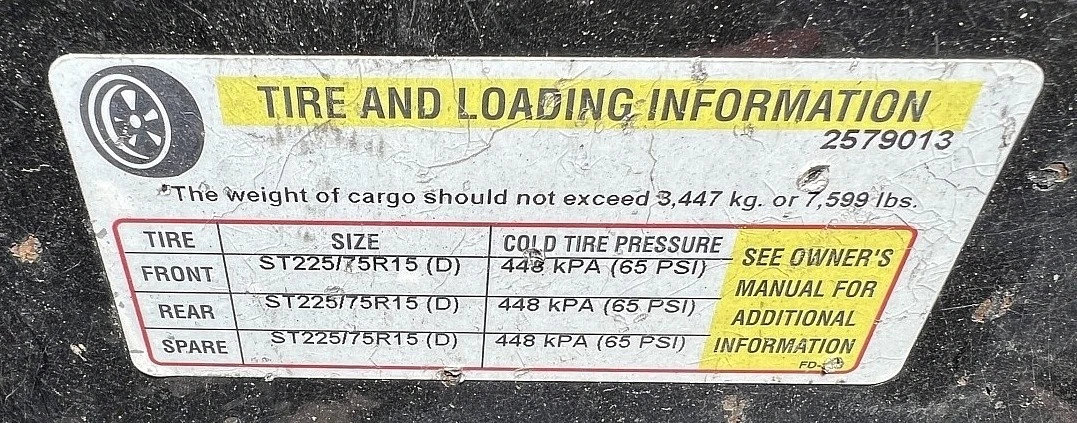Whether you need a tire for a utility trailer - opens in new window or tab., livestock trailer - opens in new window or tab., boat trailer - opens in new window or tab., or travel trailer - opens in new window or tab., the tire you choose is critical for safety and ride quality. Here are five things to know about trailer tires.
Tire Type
American tire manufacturers - opens in new window or tab. embed a label of letters and numbers on all their tires. The first set of letters indicates the intended purpose of the tire.
- P- passenger vehicle tire
- LT - light truck tire
- ST - special trailer tire

Manufacturers explicitly design the trailer tire (ST) for use on trailers. These particular tires are designed to carry heavier loads than a passenger tire. Most designs also provide for a stiffer sidewall to help carry the weight of a trailer without excessive flexing.
Tire Construction
Tires are built in two different construction methods.
- Bias - These tires have belts crossing the center of the tire at 30 to 45 degrees. This is an older construction method. The ride is stiffer, and the tires don’t last as long. Bias tires might develop a flat spot if the tire remains in one place for an extended time. Driving a tire with a flat spot results in a rough ride and could lead to early tire failure.
- Radial - These tires offer a smoother ride, better resist punctures, and withstand heat build-up. They have lower rolling resistance for better gas mileage. Most vehicles have radial tires, and the market is moving in that direction.
Gross Vehicle Weight Rating

Trailers should have a gross vehicle weight rating (GVWR) label. This label indicates the maximum allowable weight for the trailer and the payload combined. It also displays the trailer’s requirement for the tire size and inflation pressure when cold. It is best to match these specifications when shopping for a new trailer tire. Never have different tire sizes on the same axle.
Trailer Tire Load Capacity

The trailer tire should also have a marking showing the maximum load when the tire is inflated to the recommended air pressure. Trailer tires should always meet or exceed the GVWR of the trailer. If the tires are under-inflated, the load capacity is diminished. Maintaining proper tire pressure should also prolong the tire's life, create less flex in the sidewall, and generate less heat.
Trailer Tire Tips
With the above factors in mind, for most users of trailer tires, the best choice is an ST-rated radial with a load capacity of at least the GVWR of the trailer. Once you purchase a new set, here are some valuable tips.

- Balance the trailer tire. By having them balanced, you ensure even wear of the tire during its lifespan. If you notice uneven tread wear, have a tire shop re-check the balance before the wear gets worse.
- When properly cared for, most provide about 30,000 miles of use. That means maintaining the correct maximum air pressure and inspecting the tires frequently for minor cuts, nails, or abnormal wear. Many manufacturers also recommend swapping out the rubber if it's more than five years old.
- If your trailer includes a spare, cover it to avoid sun and UV damage. Consider rotating the spare into use to keep the tread wear consistent among all tires.
- Since most trailer tires are smaller than those on a passenger vehicle, the replacement cost could also be lower. Price is determined by the tire's construction, tread design, and load capacity.

eBay Motors has plenty of trailer tire choices available now. Choose carefully and enjoy your travels with that trailer.
Share your feedback
This article is meant to provide general guidance only. Automotive maintenance, repair, upgrade, and installation may depend on vehicle-specifics such as make and model. Always consult your owner's manual, repair guide for specific information for your particular vehicle and consider a licensed auto-care professional's help as well, particularly for advance repairs.
